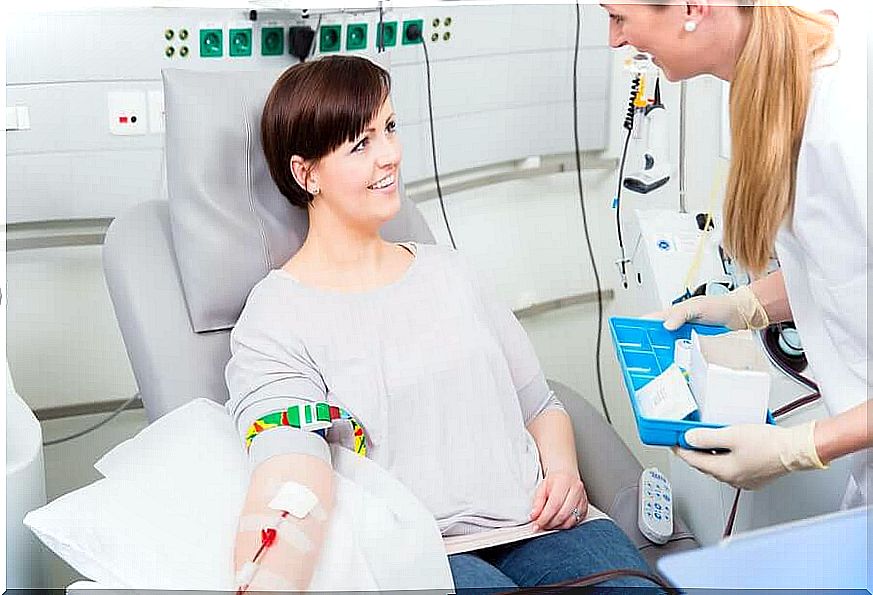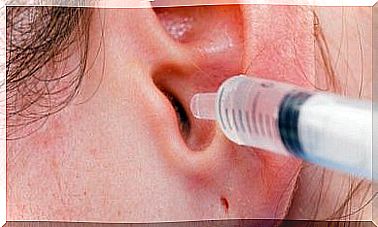Blood Transfusion: What Does It Consist Of?

Blood transfusion is one of the pillars of current medicine. It is a procedure that allows you to save a large number of lives, as it allows you to replace the blood lost, for example in an accident.
The first known human blood transfusion was carried out in the 17th century. However, the different blood groups were only identified in the 20th century. For this reason, transfusions could have been fatal until then.
Blood group is a classification of blood based on the characteristics of red blood cells and serum. When a person is exposed to a blood group that is not compatible with their own, incompatibility reactions occur that can even cause death.
Thanks to these data, it was possible to develop the procedure of blood transfusion in a safe and effective way. In this article we explain everything you need to know about it.
Blood transfusion: what does it consist of?
Blood transfusion has become a routine medical procedure. It consists of receiving blood or some of its derivatives from another individual (donor). Blood consists of the following components:
- Red blood cells (erythrocytes): responsible for transporting oxygen and eliminating “waste” from the blood.
- White blood cells: help the body fight infections.
- Platelets: are involved in blood clotting.
- Plasma: constitutes the liquid part of the blood.
To perform a blood transfusion, an individual must first have donated blood. The donor is a volunteer who does not receive any type of remuneration for this gesture.
How is a blood donation made?

Donation is a very simple procedure that can help save a person’s life. To be a donor, you must be in excellent health, weigh more than 50 kilograms, and not be anemic or have other blood disorders.
To make the donation, you can go to a specialized center or take advantage of the itinerant awareness campaigns that usually take place in public places.
You sit with your arm stretched out on an armrest and the operator in charge will measure your blood pressure and verify that you are in the optimal conditions for the donation. Then, a tourniquet will be tied around your arm.
With the tourniquet it is easier to find the vein and insert the needle into it. The needle must be sterile, as well as clean the area of skin where it will be inserted. The blood is finally collected in a bag of about 470 ml.
The procedure is simpler than it seems. It is painless and lasts about ten minutes. A small snack is usually provided to recover energy. Complications generally do not occur.
According to some studies, 92 million units of blood are donated every year. However, a deficit of 22 million units persists worldwide. For this reason, we should contribute as much as possible as blood donors.
What is blood transfusion used for?
A transfusion is used to treat patients with deficiencies in any of the blood components. For example, in the case of patients who, due to a bone marrow problem, cannot produce blood cells.
This procedure has numerous indications, such as the treatment of haemophilia, for which it guarantees the patient an adequate coagulation process. Among other uses we find:
- In case of bleeding, to replenish the blood volume.
- Surgery where a lot of blood loss is expected, such as organ transplants and wound repair.
- Chronic anemia.
- Patients undergoing chemotherapy.

What are the risks?
Blood transfusion is generally a safe procedure. However, even if the risk is low, some complications can occur. The most frequent are mild allergic reactions, which cause hives and fever.
On the other hand, it is important to know that infections hardly occur nowadays. Currently, donor blood is tested to rule out any transmissible infections such as HIV or hepatitis.
However, it is true that in some cases immune reactions can occur as a result of the transfusion. This prompts the immune system to attack the transfused red blood cells.
To conclude
Blood transfusion is a life-saving procedure for many people. It is important to be aware of this and to participate as much as possible as a donor. Someday we may be the ones who need blood from a donor.









